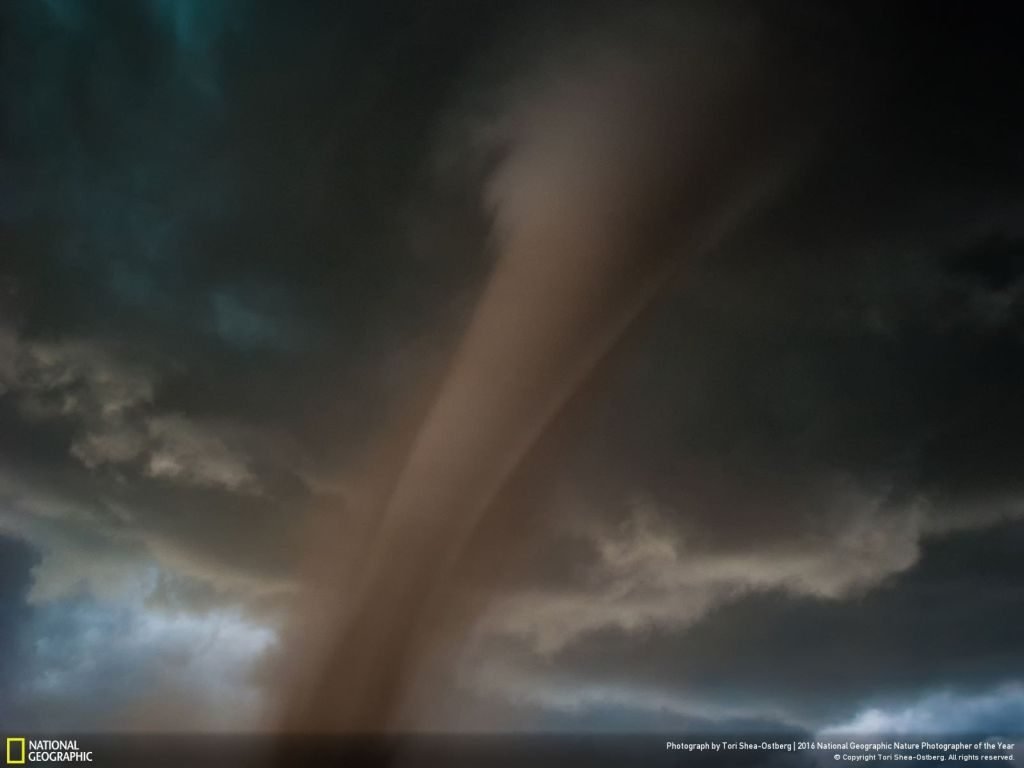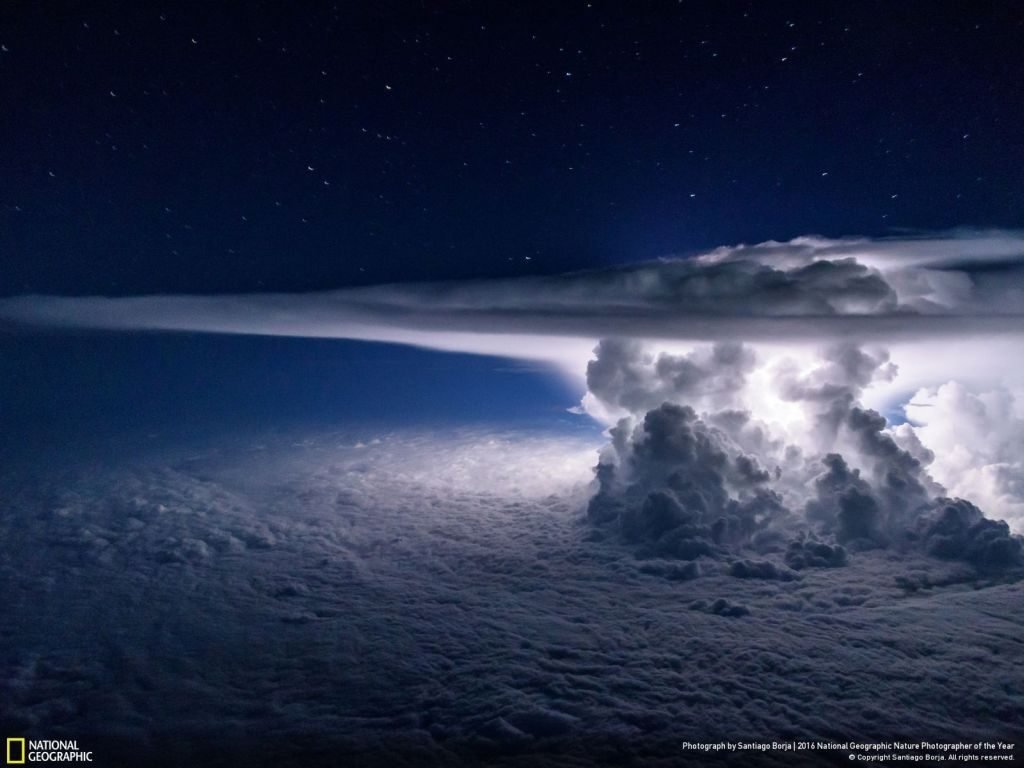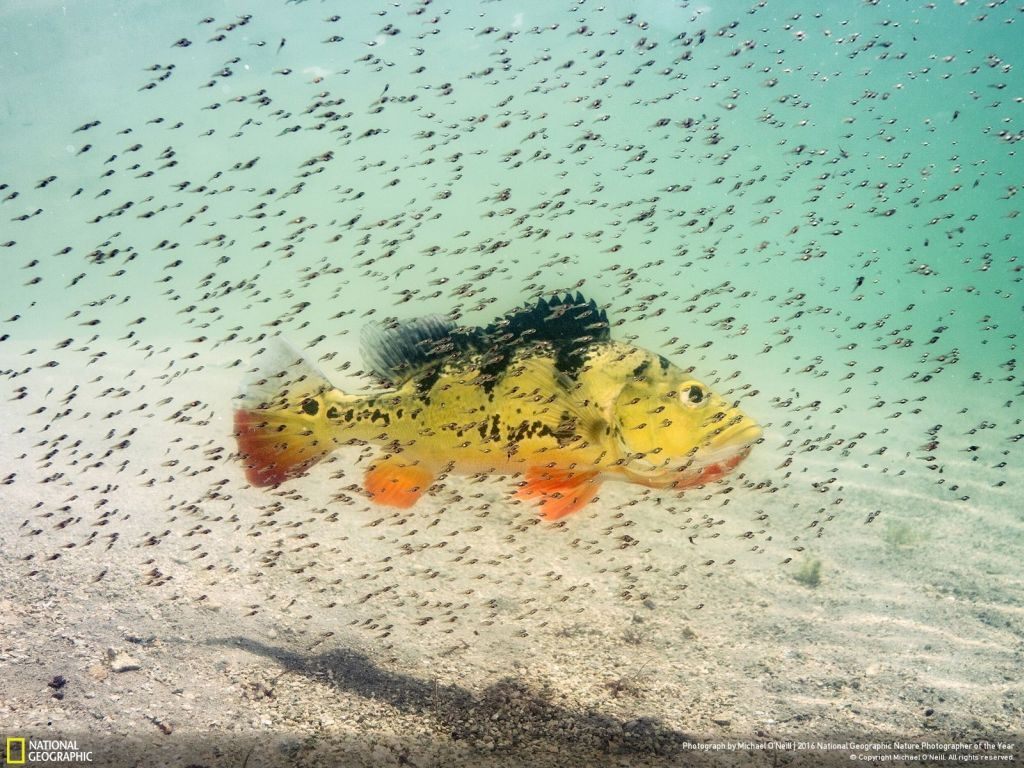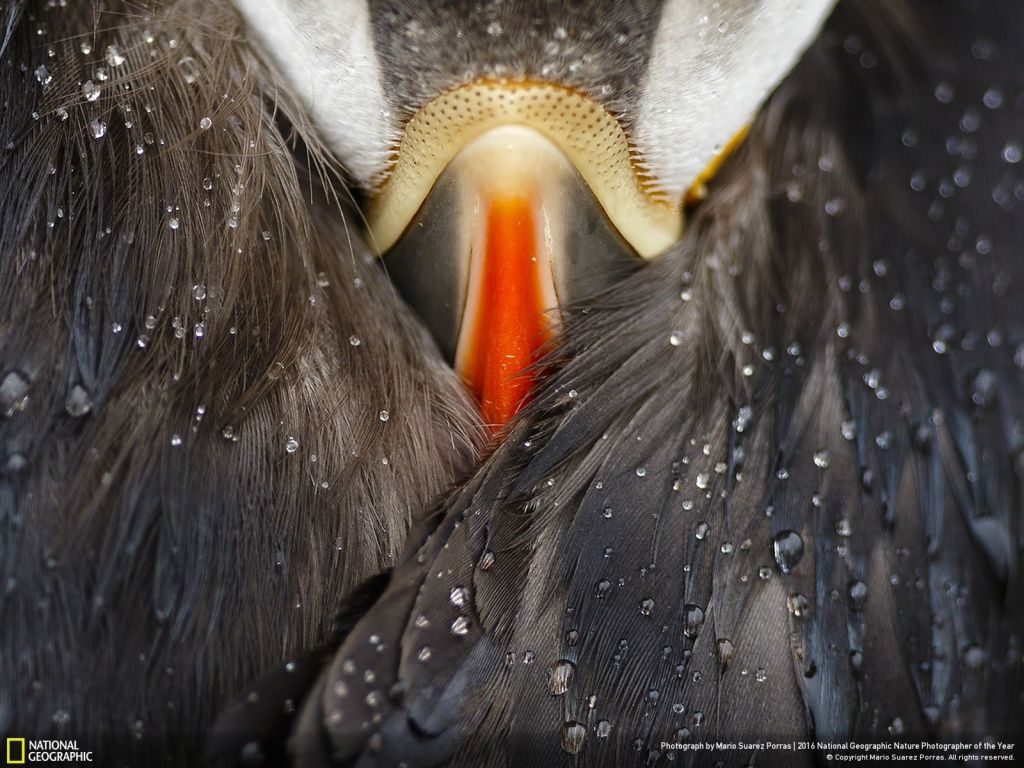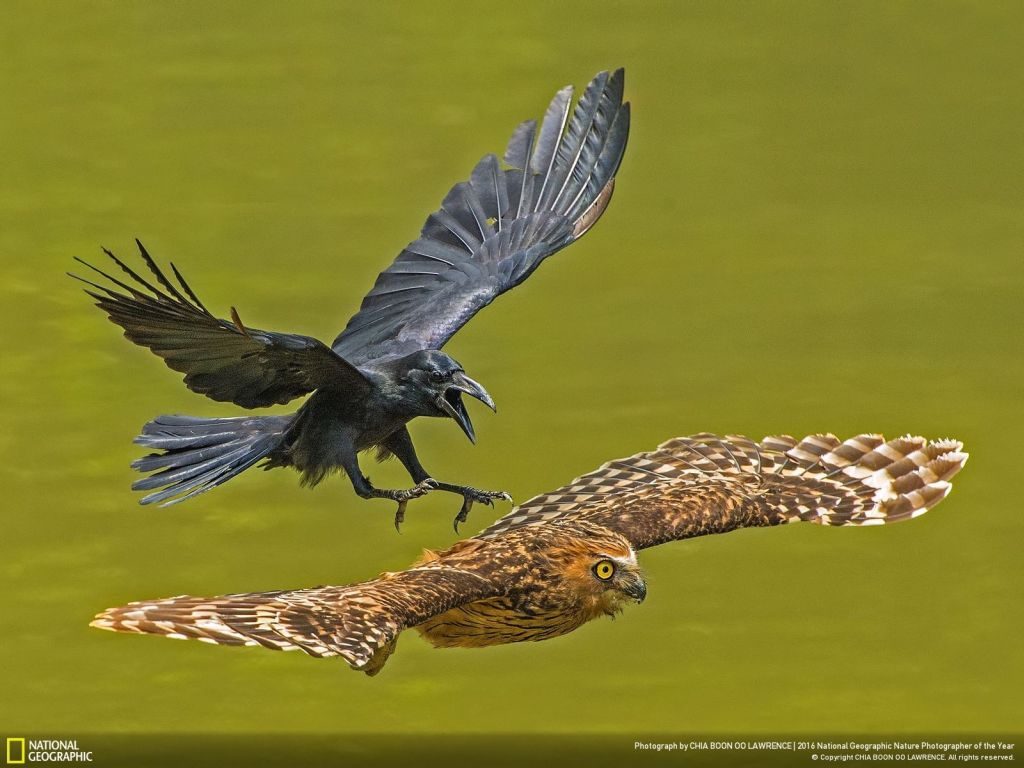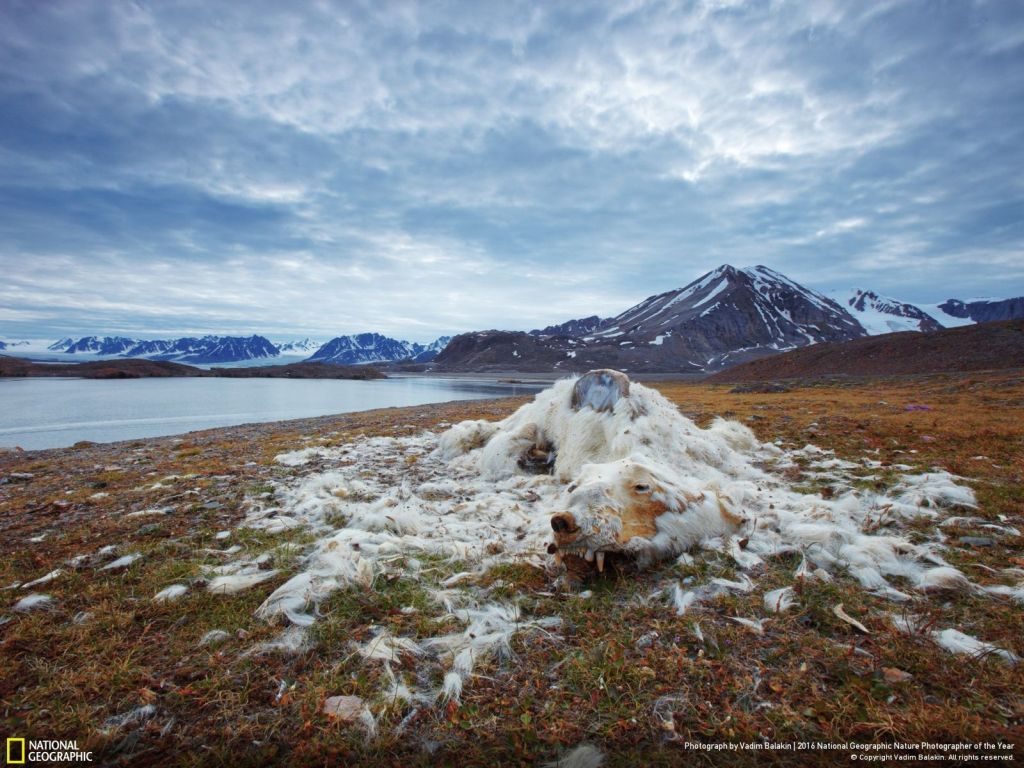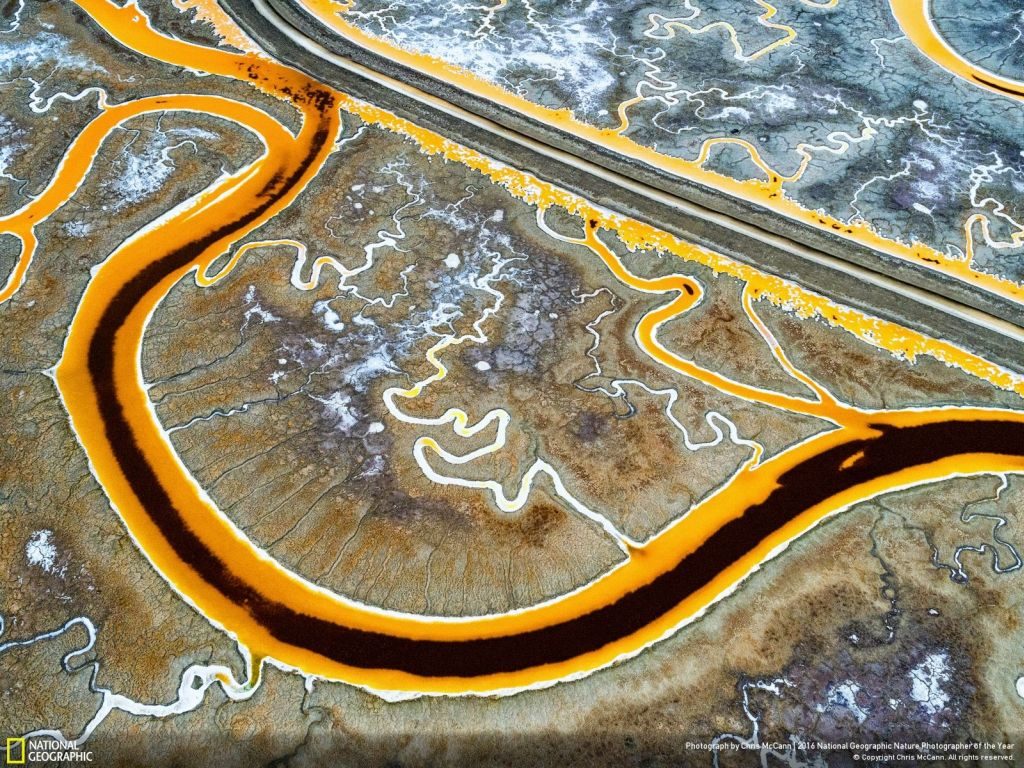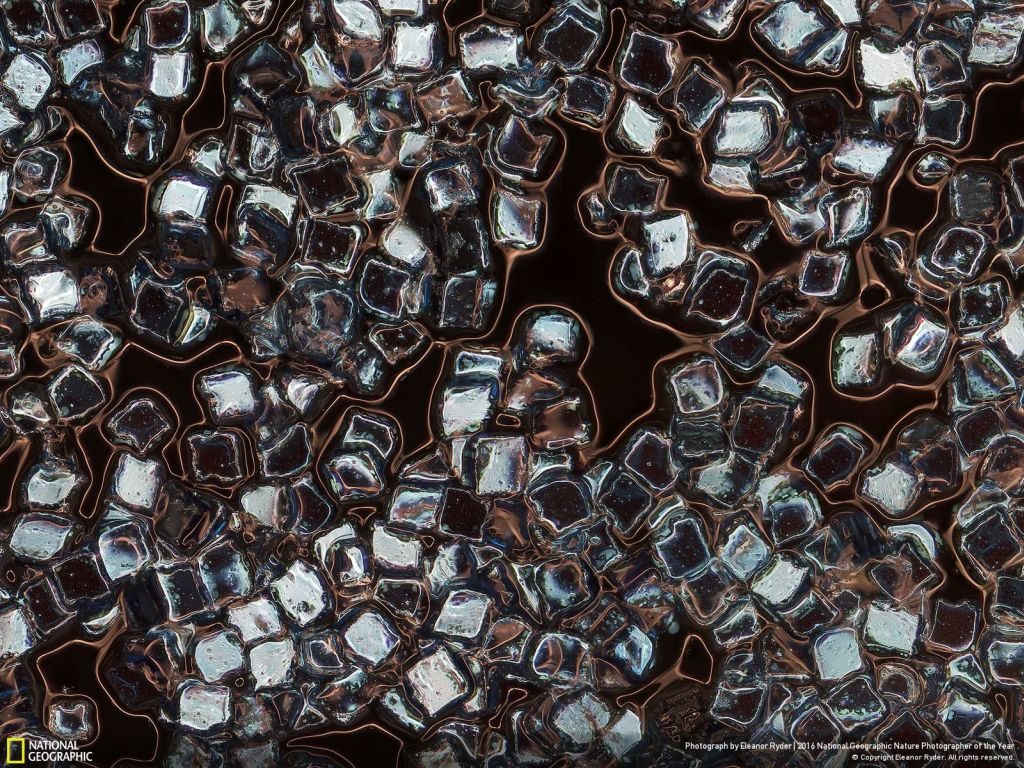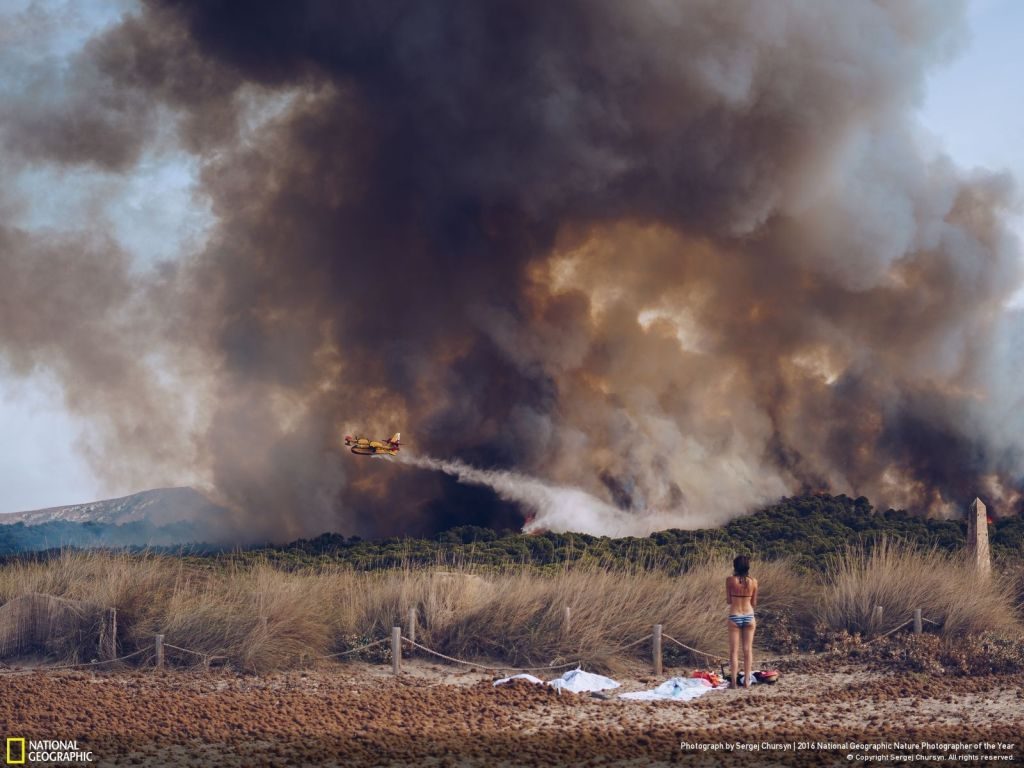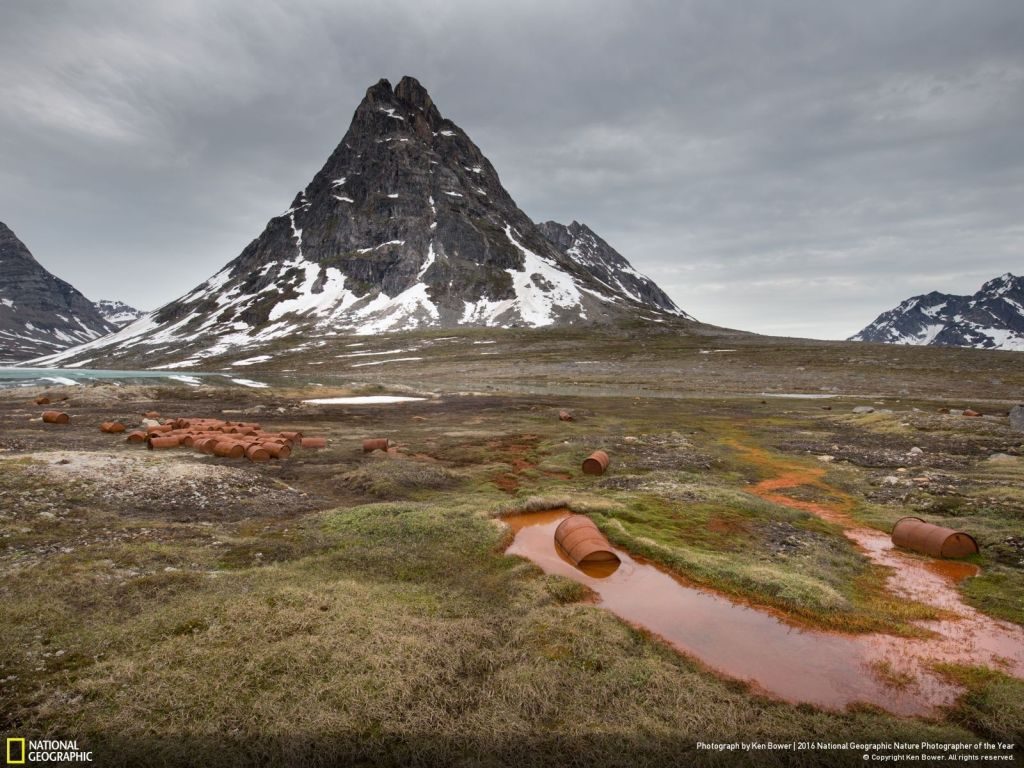Varun Aditya, of Tamil Nadu, India, placed first in the Animal Portraits category for a photo of a snake; Vadim Balakin, of Sverdlovsk, Russia, placed first in the Environmental Issues category for a photo of polar bear remains in Norway; and Jacob Kapetein of Gerland, Netherlands, placed first in the Landscape category for a photo of a small beech tree in a river. Lecoeur’s photo won the Action category.
Contestants submitted photographs in four categories — Action, Landscape, Animal Portraits and Environmental Issues — through Nat Geo’s photography community, Your Shot.
National Geographic Nature Photographer of the Year Winners:
Grand Prize Winner: Sardine Run
Photo and caption by G. Lecoeur
I captured this image during the migration of the sardines along the wild coast of South Africa. Natural predation, sardines are preyed upon by cape gannet birds and common dolphins. The hunt begins with common dolphins that have developed special hunting techniques. With remarkable eyesight, the gannets follow the dolphins before diving in a free fall from 30 to 40 meters high, piercing the surface of the water head first at a speed of 80km/h to get their fill of sardines.
Location: Port Saint John’s, Eastern Cape, South Africa
Second Place Winner, Action: Approach
Photo and caption by Tori Shea-Ostberg
An EF2 tornado bears down on a home in Wray, Colorado- May 7, 2016. As soon as we were safe, as the tornado roared off into the distance through a field before roping out, we scrambled up the hill to check on the residents.Thankfully, everyone was alright, and we were grateful for that. As I was checking in with a young woman coming out of the basement, we became very aware of a strong new circulation – right above our heads. We needed to run for cover, and did so before saying a proper goodbye.
Location: Wray, Colorado, United States
Third Place Winner, Action: Changing Fortunes of the Great Egret
Photo and caption by Zsolt Kudich
A remarkable conservation success story, the graceful Great Egret was saved from the brink of disappearance in Hungary, when in 1921 there were only 31 mating pairs remaining. Less than a century later, international conservation efforts have triumphed. We can now count over 3,000 mating pairs in Hungary alone.
Location: Balatonhídvégpuszta, Zala, Hungary
Honorable Mention, Action: Jellyfish Feast
Photo and caption by Scott Portelli
Green turtles devour the soft tentacles of a jellyfish which are a common food source for many turtles.
Location: Byron Bay, New South Wales, Australia
First Place Winner, Landscape: Struggle of life
Photo and caption by Jacob Kaptein
To restore original natural dynamics in streams many measures are necessary. In the ‘Leuvenumse beek’ a nature organisation tried to increase heterogeneity of the river bottom and water retention by putting dead wood in the stream system. In autumn when rainfall is high, pieces of forest get flooded. Once i saw this little beech in the water, trying to survive under these harsh conditions. I returned sometimes to this place to take pictures. One evening all the conditions were satisfactory.
Second Place Winner, Landscape: Wild rink
Photo and caption by Alessandro Gruzza
The first cold days of winter have frozen the surface of a pond. The first snowfall has revealed its delicate beauty. A long shutter speed enhances the movement of the clouds around Mt. Cimon de la Pala, Paneveggio-Pale San Martino Natural Park, Italy.
Location: Around Mt. Cimon de la Pala, Paneveggio-Pale San Martino Natural Park, Italy.
Third Place Winner, Landscape: Pacific Storm
Photo and caption by Santiago Borja
A colossal Cumulonimbus flashes over the Pacific Ocean as we circle around it at 37000 feet en route to South America.
Location: Over the Pacific Ocean
Honorable Mention, Landscape: Serendipitous Green Meteor
Photo and caption by Prasenjeet Yadav
This GreenMeteor was captured while taking a time-lapse to document the urbanization around the Skyislands in India. The camera was set at 15s exposure for 999 shots and this came into one of those shots. Green Meteor’s greenish color come from a combination of the heating of oxygen around the meteor and the mix of minerals ignited as the rock enters Earth’s atmosphere. I think for those 15 seconds, I was the luckiest photographer on the planet to have capture this phenomenon.Location: India
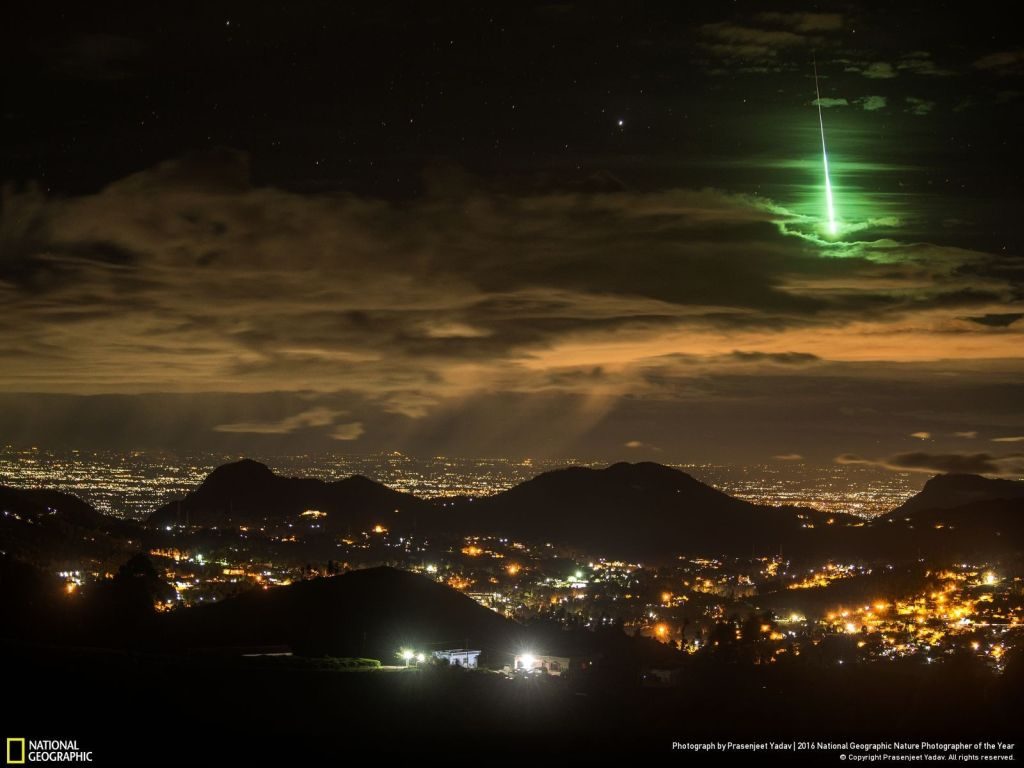 First Place Winner, Animal Portraits: Dragging you Deep into the Woods!
First Place Winner, Animal Portraits: Dragging you Deep into the Woods!
Photo and caption by Varun Aditya
A morning stroll into the blissful forest! Ceaseless drizzles dampening the woods for 12 hours a day; The serene gloom which kept me guessing if it was a night or a day. Heavy fog, chilling breeze and the perennial silence could calm roaring sprits; And there I spotted this 20cm beauty the Green vine snake ! I wondered if I needed more reasons to capture this with the habitat; For I was blessed to see this at the place I was at. I immediately switched from the macro to the wide angle lens.
Location: Amboli, Maharashtra, India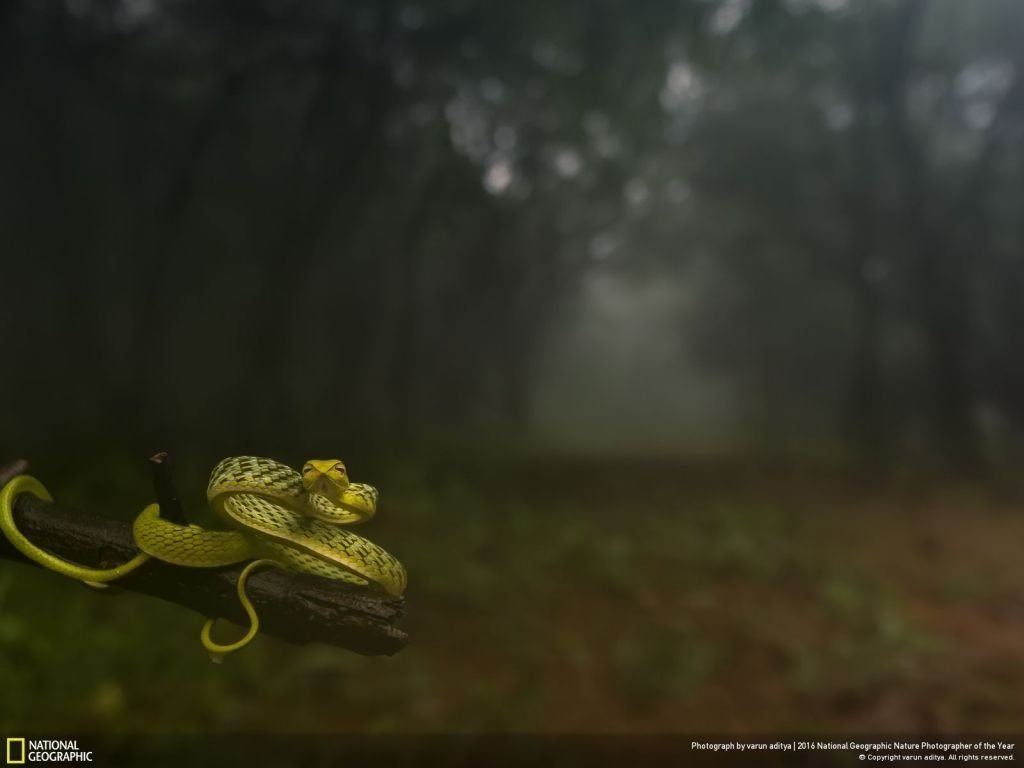 Second Place Winner, Animal Portraits: Proud Momma
Second Place Winner, Animal Portraits: Proud Momma
Photo and caption by Michael O’Neill
Fry of a Peacock Bass hover around their mom for protection against predators. Peacock Bass, part of the Cichlid family, exercise excellent parental car and will protect their young against any threat that approaches them. This tropical species from South America was intentionally introduced in South Florida during the 1980s to control the African Tilapia, another invasive species.
Location: South Miami, Florida, United States
Third Place Winner, Animal Portraits: Friendship knows no color
Photo and caption by Jose Pesquero Gomez
‘Friendship knows no color, nationality, race and social level, friendship knows no age and gender, friendship knows no distance’ – quoted by Luis A Ribeiro Branco -. This way must be. And this images perfectly could represent that message. Two Empusa Pennata which seem to play a game on the thin plant. Wildlife image and absolutely uncommon to see a couple of this specie together.
Location: Madrid, Madrid, Spain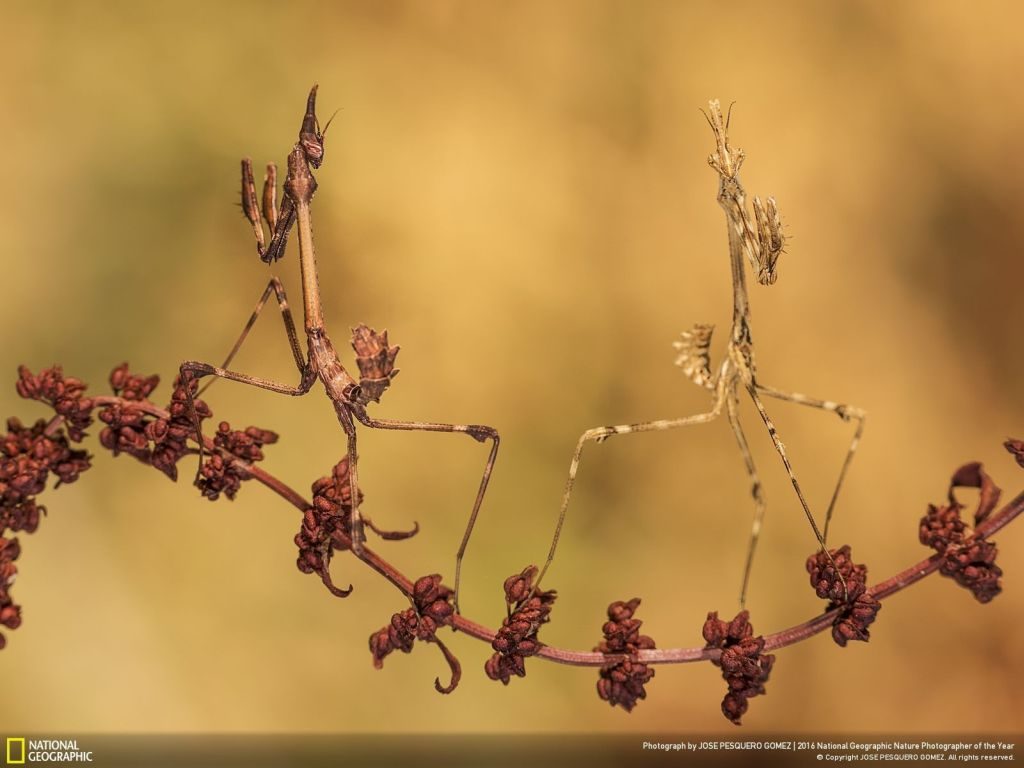
Honorable Mention, Animal Portraits: Puffin studio
Photo and caption by Mario Suarez Porras
This image was taken last summer on Skomer Island, Wales. It is well known for its wildlife, the puffin colony is one of the largest in U.K.The photo shows a detail or study of an Atlantic puffin resting peacefully under the rain. As Skomer is inhabited, puffins do not feel afraid of humans, and so people can be close to puffins and the photographer can think about the right composition and take this kind of intimate portraits. Also that morning the conditions came together: rain and light.
Location: Marloes, Wales, United Kingdom
Honorable Mention, Animal Portraits: Crow chasing Puffy Owl
Photo and caption by Chia Boon Oo Lawrence
First Place Winner, Environmental Issues: Life and Death
Photo and caption by Vadim Balakin
Location: Longyearbyen, Svalbard, Svalbard and Jan Mayen
Second Place Winner, Environmental Issues: The View Outside Facebook HQ
Photo and caption by Chris McCann
Location: Ravenswood, California, United States
Third Place Winner, Environmental Issues: Toxic Vanity
Photo and caption by Eleanor Ryder
Honorable Mention, Environmental Issues: no snow, no ice?
Photo and caption by Patty Waymire
Honorable Mention, Environmental Issues: Wildfire at the beach
Photo and caption by Sergej Chursyn
Honorable Mention, Environmental Issues: American Flowers #1
Photo and caption by Ken Bower
Location: Kuummiit, Sermersooq, Greenland
Let us know your favourite National Geographic Nature Photographer of the Year winner in a comment below or share this story on Facebook.
Source: http://photography.nationalgeographic.com/nature-photographer-of-the-year-2016/
ALSO SEE: 12 Epic Photos to Make You Fall in Love with Wildlife




